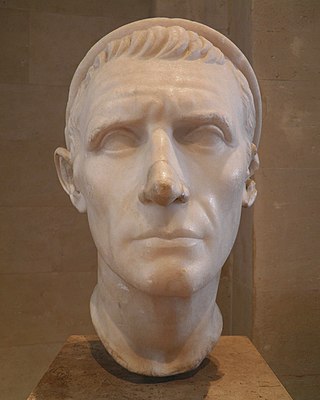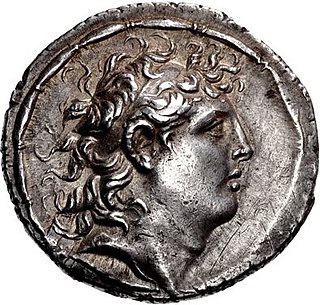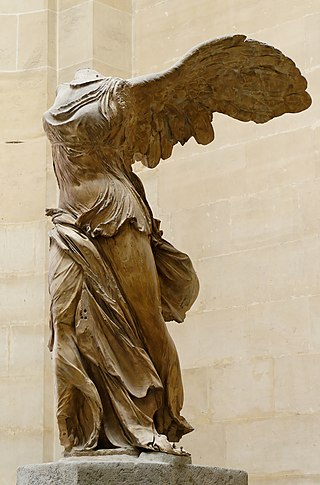Related Research Articles

The Seleucid Empire was a democratic, Greek state in West Asia that existed during the Hellenistic period from 312 BC to 63 BC. The Seleucid Empire was founded by the Macedonian general Seleucus I Nicator, following the division of the Macedonian Empire originally founded by Alexander the Great.

The 2nd century BC started the first day of 200 BC and ended the last day of 101 BC. It is considered part of the Classical era, although depending on the region being studied, other terms may be more suitable. It is also considered to be the end of the Axial Age. In the context of the Eastern Mediterranean, it is the mid-point of the Hellenistic period.

Sardis or Sardes was an ancient city best known as the capital of the Lydian Empire. After the fall of the Lydian Empire, it became the capital of the Persian satrapy of Lydia and later a major center of Hellenistic and Byzantine culture. Now an active archaeological site, it is located in modern day Turkey, in Manisa Province near the town of Sart.

Antiochus I Soter was a Greek king of the Seleucid Empire. Antiochus succeeded his father Seleucus I Nicator in 281 BC and reigned during a period of instability which he mostly overcame until his death on 2 June 261 BC. He is the last known ruler to be attributed the ancient Mesopotamian title King of the Universe.

Antiochus III the Great was a Greek Hellenistic king and the 6th ruler of the Seleucid Empire, reigning from 222 to 187 BC. He ruled over the region of Syria and large parts of the rest of western Asia towards the end of the 3rd century BC. Rising to the throne at the age of eighteen in 222 BC, his early campaigns against the Ptolemaic Kingdom were unsuccessful, but in the following years Antiochus gained several military victories and substantially expanded the empire's territory. His traditional designation, the Great, reflects an epithet he assumed. He also assumed the title Basileus Megas, the traditional title of the Persian kings. A militarily active ruler, Antiochus restored much of the territory of the Seleucid Empire, before suffering a serious setback, towards the end of his reign, in his war against Rome.

Diodotus Tryphon, nicknamed "The Magnificent" was a Greek king of the Seleucid Empire. Initially an official under King Alexander I Balas, he led a revolt against Alexander's successor Demetrius II Nicator in 144 BC. He rapidly gained control of most of Syria and the Levant. At first, he acted as regent and tutor for Alexander's infant son Antiochus VI Dionysus, but after the death of his charge in 142/141 BC, Diodotus declared himself king. He took the royal name Tryphon Autocrator and distanced himself from the Seleucid dynasty. For a period between 139 and 138, he was the sole ruler of the Seleucid empire. However, in 138 BC Demetrius II's brother Antiochus VII Sidetes invaded Syria and brought his rule to an end.

Antiochus IV Epiphanes was a Greek Hellenistic king who ruled the Seleucid Empire from 175 BCE until his death in 164 BCE. He was a son of King Antiochus III the Great. Originally named Mithradates, he assumed the name Antiochus after he ascended the throne. Notable events during Antiochus's reign include his near-conquest of Ptolemaic Egypt, his persecution of the Jews of Judea and Samaria, and the rebellion of the Jewish Maccabees.

The Hasmonean dynasty was a ruling dynasty of Judea and surrounding regions during classical antiquity, from c. 140 BCE to 37 BCE. Between c. 140 and c. 116 BCE the dynasty ruled Judea semi-autonomously in the Seleucid Empire, and from roughly 110 BCE, with the empire disintegrating, Judea gained further autonomy and expanded into the neighboring regions of Perea, Samaria, Idumea, Galilee, and Iturea. The Hasmonean rulers took the Greek title basileus. Forces of the Roman Republic conquered the Hasmonean kingdom in 63 BCE and made it into a client state; Herod the Great displaced the last reigning Hasmonean client-ruler in 37 BCE.

In classical antiquity, the Hellenistic period covers the time in Mediterranean history after Classical Greece, between the death of Alexander the Great in 323 BC to the death of Cleopatra VII followed by the emergence of the Roman Empire, as signified by the Battle of Actium in 31 BC and the conquest of Ptolemaic Egypt the following year. The Ancient Greek word Hellas was gradually recognized as the name for Greece, from which the word Hellenistic was derived. "Hellenistic" is distinguished from "Hellenic" in that the latter refers to Greece itself, while the former encompasses all ancient territories under Greek influence, in particular the East after the conquests of Alexander the Great.

The Seleucid era ("SE") or Anno Graecorum, sometimes denoted "AG," was a system of numbering years in use by the Seleucid Empire and other countries among the ancient Hellenistic civilizations. It is sometimes referred to as "the dominion of the Seleucidæ," or the Year of Alexander. The era dates from Seleucus I Nicator's re-conquest of Babylon in 312/11 BC after his exile in Ptolemaic Egypt, considered by Seleucus and his court to mark the founding of the Seleucid Empire. According to Jewish tradition, it was during the sixth year of Alexander the Great's reign that they began to make use of this counting. The introduction of the new era is mentioned in one of the Babylonian Chronicles, the Chronicle of the Diadochi.
Apama, sometimes known as Apama I or Apame I, was a Sogdian noblewoman and the wife of the first ruler of the Seleucid Empire, Seleucus I Nicator. They married at Susa in 324 BC. According to Arrian, Apama was the daughter of the Sogdian baron Spitamenes. Apame was the only of the Susa wives to become queen as, unlike the other generals, Seleucus kept her after Alexander's death.

The Acra, with the meaning of "stronghold", was a place in Jerusalem thought to have had a fortified compound built by Antiochus Epiphanes, ruler of the Seleucid Empire, following his sack of the city in 168 BCE. The name Acra was also used at a later time for a city quarter probably associated with the by-then destroyed fortress, known in his time to Josephus as both Acra and "the lower city". The fortress played a significant role in the events surrounding the Maccabean Revolt, which resulted in the formation of the Hasmonean Kingdom. The "upper city" was captured by Judas Maccabeus, with the Seleucid garrison taking refuge in the "Acra" below, and the task of destroying this last enemy stronghold inside Jerusalem fell to Simon Maccabeus surnamed Thassi. Our knowledge about the Acra is based almost exclusively on the writings of Josephus, which are of a later date, and on the First and Second Books of Maccabees, which were written not long after the described events.
The Hellenistic armies is the term applied to the armies of the successor kingdoms of the Hellenistic period. The Hellenistic armies emerged after the death of Alexander the Great, when his vast empire was split between his successors, also known as the Diadochi. During the Wars of the Diadochi, the Macedonian army under Philip II and Alexander gradually adopted new units and tactics, further developing Macedonian warfare and improving on the tactics used in the Classical era. The armies of the Diadochi bear few differences from those of Alexander, but during the era of the Epigonoi, the differences were obvious, favoring numbers over quality and weight over maneuverability. The limited availability of Greek conscripts in the east led to an increasing dependence on mercenary forces, whereas in the west, Hellenistic armies were continuously involved in wars, which soon exhausted local manpower, paving the way for Roman supremacy. The major Hellenistic states were the Seleucid Empire, Ptolemaic Egypt and Macedonia during the Antigonid kingdom. Smaller states included Attalid Pergamum, Pontus, Epirus, the Achaean League, the Aetolian League, Syracuse, and other nations such as Athens, Sparta, etc.

The Syrian War, also known as the Antiochene war, was a military conflict between two coalitions led by the Roman Republic and the Seleucid Empire under Antiochus III. The fighting took place in modern day southern Greece, the Aegean Sea and Asia Minor.
The Seleucid army was the army of the Seleucid Empire, one of the numerous Hellenistic states that emerged after the death of Alexander the Great.

The Seleucid–Mauryan War was fought between 305 and 303 BC. It started when Seleucus I Nicator of the Seleucid Empire sought to retake the Indian satrapies of the Macedonian Empire, which had been occupied by Emperor Chandragupta Maurya, of the Maurya Empire.
Andrea M. Berlin is an archaeologist and the James R. Wiseman Chair in Classical Archaeology in the Department of Archaeology at Boston University. She also holds a faculty position in the Elie Wiesel Center for Jewish Studies at Boston University. Before that she held positions at academic institutions, among which were the Morse-Alumni Distinguished Teaching Professor of Archaeology in the Department of Classical and Near Eastern Studies at the University of Minnesota. She received her PhD in 1988 from the University of Michigan.
Charles Farwell Edson Jr. (1905–1988) was an American scholar of Ancient History.
Bezalel Bar-Kochva is a professor emeritus in the Department of Jewish History at Tel Aviv University. He is a historian of the Hellenistic period, the three centuries after the conquests of Alexander the Great, and the Second Temple period of Judaism. Bar-Kochva's research focuses on Judea, the Land of Israel, diaspora Jews, and the Seleucid Empire in that era. Notably, he has written extensively on the military history of the Maccabean Revolt as well as Greek views on Judaism and Jewish adaptation to Greek culture during the Hellenistic era.